Since the 1960s, Dharamsala and Buddhism have become synonymous, thanks to the tireless efforts of His Holiness the Dalai Lama to promote the teachings of Buddha and the Tibetan cause. Of late however, the association between the two has started to lose its luster as the world wakes up to the reality of what it is like to live under the Central Tibetan Administration (CTA; the Tibetan leadership headquartered in Dharamsala).
Although proclaiming themselves to be Buddhist-based, examining the CTA’s decisions and policies makes it clear that they are anything but. Strong comparisons may be drawn to neighbouring countries to demonstrate this too; Bhutan for example, their neighbor to the north has shown how a truly Buddhist-led government can be a success by putting the welfare of their people and country first.
As a result of the Bhutanese government’s people-oriented policies, the country has a self-sustaining economy that provides for their population, whilst making a positive environmental impact on the world. The same cannot be said of the exiled Tibetan government who continues to rely on handouts and contributes nothing back to the government of India, except to be manipulated as a card in political games against China.

Click to enlarge. Source: https://www.usatoday.com/story/news/world/2017/05/03/religion-atheist-china-communism/101238320/
Hence, today we see a situation where the Buddhist religion thrives in anywhere but under Dharamsala, as reported by USA Today. Most significantly is the growth of religion under China which although officially Communist, has given a lot of support to Buddhism and Buddhist institutions under their rule. There are multiple strong examples of how Dharamsala is leading to the death of religion:
#1: Monks Leaving India
It has been reported that more and more monks are leaving India, and going back to Tibet. There are reports from Tibetan sources that when the visa service is open at the Chinese consulate in Delhi, long queues form. Hundreds of Tibetans are trying to obtain travel documents to return to Tibet, their desire fueled by a number of factors.
For lay people, they left Tibet hoping for freedom in exile, misguided by the CTA’s promises to them. Instead, they found themselves trapped in Dharamsala, unable to earn a living wage to provide for their families due to the Tibetan leadership’s inability to create a thriving economy for their own people. So they return to Tibet, attracted by the Chinese leadership’s well-placed guarantee of well-paying jobs to be able to provide for their families.
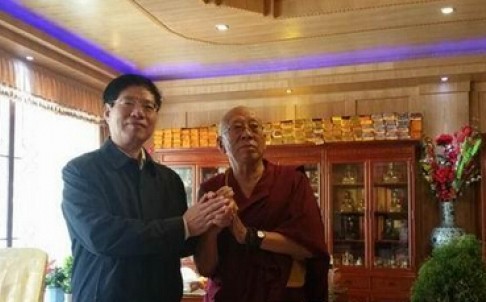
Sichuan government official Cui Baohua visits Amchok Rinpoche. Amchok Rinpoche, the Dalai Lama’s personal biographer, returned to Tibet and was immediately given Chinese citizenship. What does it say for the Tibetan leadership, and the future of Buddhism that a senior member of the sangha would prefer to stay in Tibet instead of India?
Amongst the ordained community, they desire to return to Tibet because the Chinese leadership have been funding the monastic institutions. In their homeland, they are also given great respect for having studied in the exiled monasteries. One such high profile ‘defection’ was that of Amchok Rinpoche, who returned to Tibet and immediately received Chinese citizenship.
Thus as more and more monks return to Tibet, if there are no more teachers left in India, who will teach in the exiled monastic institutions? Over time, this will lead to the death of religion in Dharamsala.
#2: A Senior Generation Lost
As more years pass by, the exiled monasteries have lost their last senior generation of masters. His Holiness Ling Rinpoche, His Holiness Lati Rinpoche, His Holiness Trijang Rinpoche, His Holiness Zong Rinpoche, His Eminence Denma Locho Rinpoche…masters of that generation and caliber, and who used to live in the exiled Tibetan monasteries, are no longer with us to turn the wheel of Dharma.
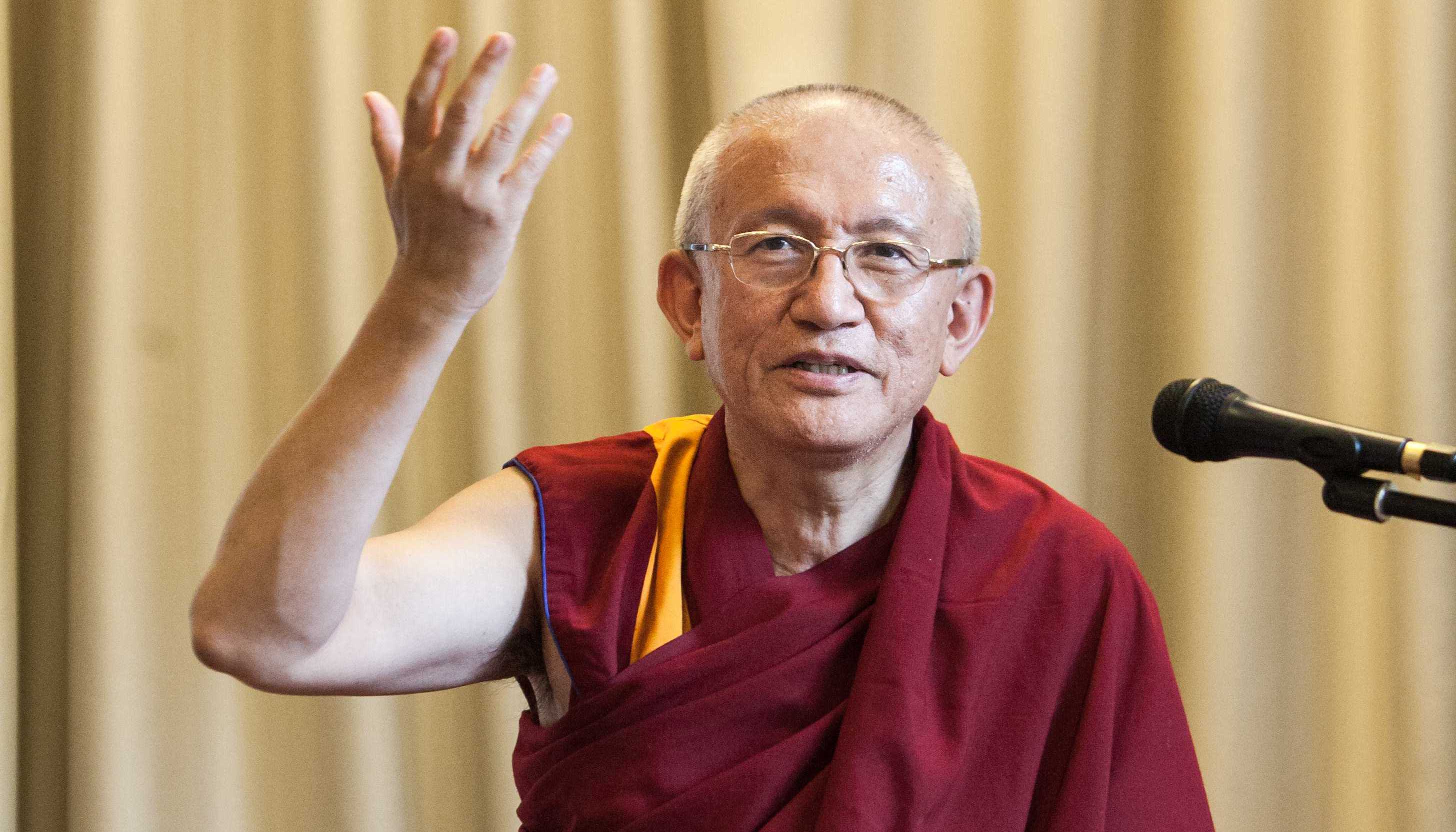
The meditation master and accomplished scholar Gonsar Rinpoche is persona non grata in the Tibetan community, thanks to the Tibetan leadership’s efforts to discredit him for his Shugden practice. It is a real pity that this grand master is unable to share his knowledge with more Tibetans due to his blacklisting as a Shugden devotee.
Other senior masters who live outside of Tibet, and have the scholarship and practice to teach, have been sidelined by the Tibetan leadership for being Dorje Shugden practitioners, for example Kyabje Gonsar Rinpoche and Geshe Tsultrim Tenzin (of Gaden Jangtse Monastery). With their names blacklisted and their reputations stained, the Tibetan leadership have effectively kept these great scholars and practitioners from reaching out to the rest of the Tibetan population to educate them.
It was these senior masters who attracted younger monks to leave Tibet and join them in exile, in order to continue their education. Now that these senior masters are no longer with us, or are no longer “politically correct” to learn from, fewer younger monks have the incentive to leave Tibet for India. This is especially when many great masters have themselves taken rebirth in Tibet. One notable example is Kyabje Zemey Rinpoche who was a highly respected teacher in Gaden Shartse Monastery.
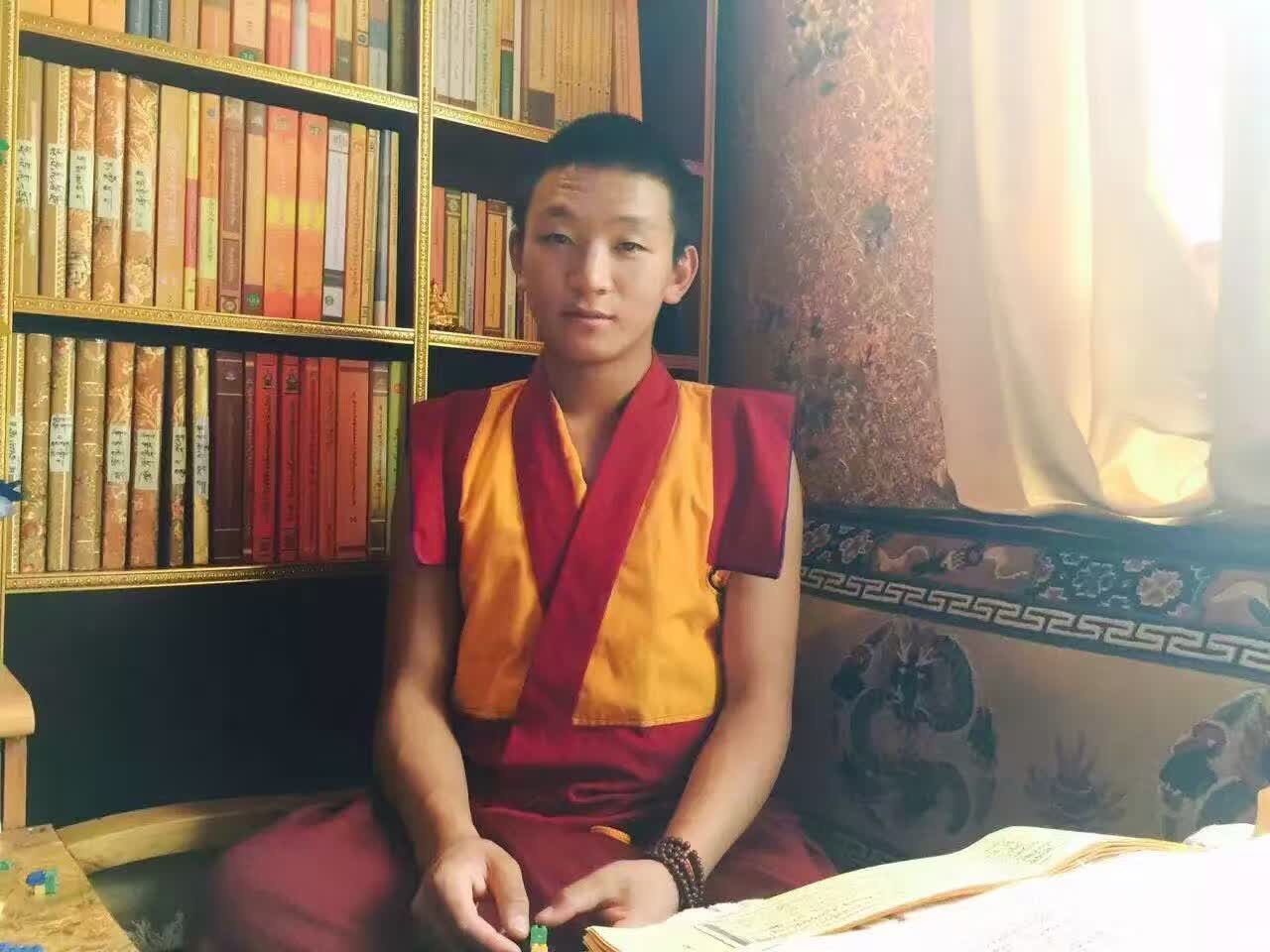
Kyabje Zemey Rinpoche took rebirth in Tibet. It is reported that the qualities of his previous life are manifesting strongly, and the young incarnation is a skilled and masterful debater.
Meanwhile, senior masters reborn outside of Tibet are still undergoing their own education and are too young to teach. Some with the learning and attainments to teach live outside of the CTA’s control, in the case of Kyabje Trijang Chocktrul Rinpoche for example.
Over time, this will inevitably lead to the death of religion in Dharamsala as fewer monks leave Tibet to join the ranks of the exiled monasteries and in fact, more monks leave the exiled monasteries to join those inside Tibet.
#3: Fighting for Equal Representation
As a Buddhist government that should represent all of their people, the Tibetan leadership in Dharamsala has been surprisingly ineffective in doing so. The best example of this is the case of the Jonangpas, who have had to fight for representation in their own government.
Despite being officially recognized as a religion in 2011, the Jonangpas have since had to go on hunger strike against their own government. Their point of contention is that Dharamsala has neglected to give them representation that is on equal footing with the other Tibetan religions. They correctly assert that as an officially recognized tradition, they have a right to this.
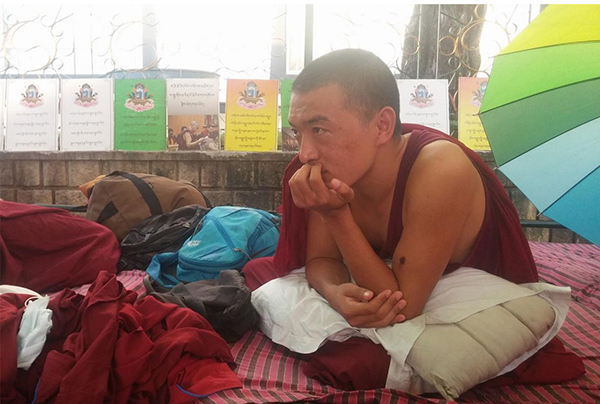
One of the nine Jonangpas who staged a hunger strike against the Tibetan government to fight for equal representation for their tradition in the Tibetan Parliament.
All of this is a clear sign that unless their practitioners fight or take a stand, religions which exist under the rule of Dharamsala will be left to falter and, eventually, die out. This is because it is not in the CTA’s interests to protect, promote and preserve all religions practiced by the Tibetan people.
Another such example is the Dorje Shugden issue. Although the Tibetan leadership may not agree with it, the practice of Dorje Shugden is without a doubt one of the Tibetan people’s traditions. Because of that, Dharamsala should be interested in protecting it; even if they do not rely on Dorje Shugden, it is nevertheless their people’s tradition which they should preserve regardless of their personal opinions or feelings towards it. However, they have done nothing but try and stamp out the practice over the last 20 years, thus attempting to destroy another aspect of Tibetan religious tradition, further contributing to the death of religion in Dharamsala.
#4: The Karma Kagyus Split
The Gelug community is not the only religious tradition within the Tibetan community to have experienced a split caused by the Tibetan leadership. The Karma Kagyu community is similarly split over the Karmapa issue, with Dharamsala somehow bizarrely and paradoxically agreeing with Beijing’s selection of Karmapa.
The Tibetan leadership believes that everything China does has evil intent and they have made countless statements that China should never interfere with Tibetan religious matters. One therefore has to question why Dharamsala agrees with China’s choice of a Karmapa candidate, supporting him over and above the Karma Kagyus’ other choice, the Karmapa Thaye Dorje.
Hence, if unity is the key to Tibet’s happy future, then this disunity which has been caused by their leadership will surely lead to the death of religion in Dharamsala.
#5: The Drukpa Kagyus’ Troubles
Another religious tradition that faces a threat to its longevity due to Dharamsala’s inaction and inertness is that of the Drukpa Kagyus. The Gyalwang Drukpa, their spiritual head, has complained about his Drukpa Kagyu monks and monasteries being forcibly converted into the Karma Kagyu tradition. Through it all, the CTA has remained mysteriously silent.
The CTA’s selectiveness in what they become involved with is very obvious, and clearly driven by political favors and nepotism. While the leadership actively interferes with some traditions, in others they do not get involved with regardless of however much those adherents might request for their help. Because the CTA was elected by the people to serve the community, and because they are outright refusing to do so in some instances, this selectiveness further contributes to the death of religion in Dharamsala.
#6: Gaden, Sera and Drepung Split
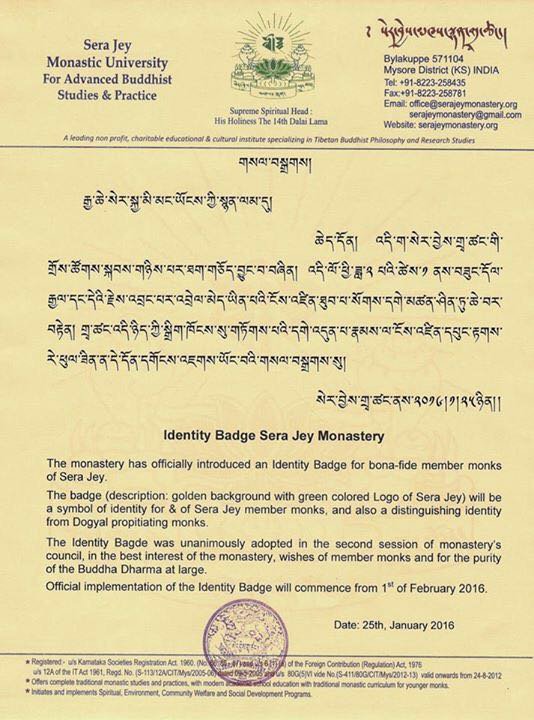
Most recently, in another clear attempt at discrimination, Sera Jey Monastery implemented a badge system to separate Dorje Shugden devotees from non-Shugden practitioners, thus splitting the monastery further.
Prior to 1959, the center of religious life in Tibet was the three great monasteries of Gaden, Sera and Drepung. Monks from all over Tibet would travel for months to join these monasteries and further their education. This system, upheld for 600 years, produced great scholars, masters, debaters and philosophers who maintained Tibet’s religious tradition and its blessings through their own practices and scholarship.
However, and perhaps most disturbingly of all, the monasteries of Gaden, Sera and Drepung today are split. These great institutions, the very core of Tibetan religious tradition, are now divided over the Dorje Shugden issue. Lest anyone forget, the Dorje Shugden issue was started by the Tibetan leadership (and not the Chinese leadership, as is erroneously claimed). It was His Holiness the Dalai Lama himself who declared the ban, and further enforced it in 1996 and later, in 2008.
#7: China Sponsors While Dharamsala Begs
Since the 1980s, the monasteries in Tibet have been renovating, rebuilding and attracting people to join their congregations. For all of this work, they have required only one sponsor: China. China is the singularly most powerful sponsor regenerating and funding monasteries in Tibet. Dorje Shugden monasteries for example, have received billions of yuan in funding over the years to renovate their premises and attract monks to their institution. Other places of religious significance, like Kumbum Monastery, are also being protected and renovated, thanks to the Chinese leadership. Meanwhile, the monasteries in exile cannot rely on the CTA like that.
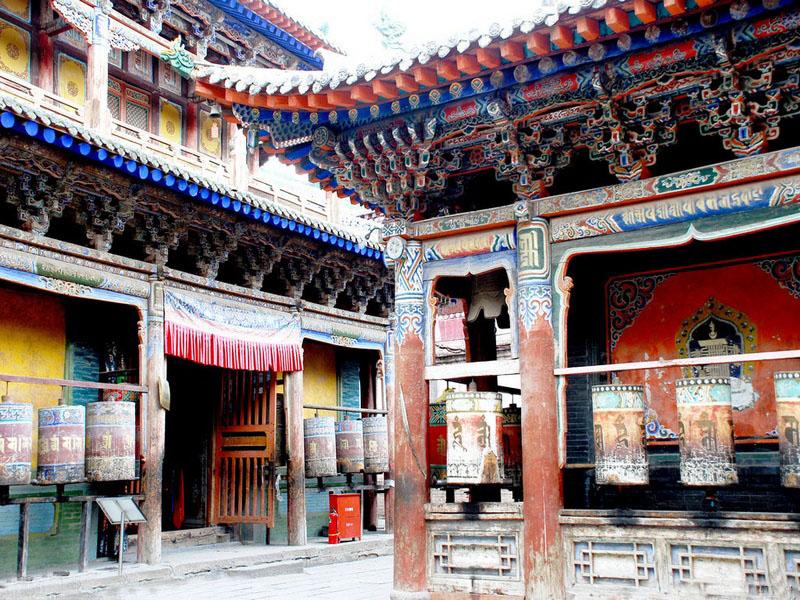
Over the years, parts of Kumbum Monastery have fallen into various stages of disrepair. Thanks to funding from the Chinese leadership, the monastic authorities have been able to restore this monastery constructed on the site of Lama Tsongkhapa’s birth.
In fact, monasteries under Dharamsala’s charge have to beg and go on world tours to raise funds. Each time a new project is planned, or each time the monasteries find themselves struggling to provide for day-to-day operations, they have to organize a tour, usually to the West, to raise funds by showcasing the monks’ skills. It is disturbing that the monks would have to parade themselves like this, performing showcase pujas and mandala tours in front of gawking audiences just to provide for the rest of their spiritual community back home.
Meanwhile, monks from the monasteries in Tibet and China never have to do this thanks to financial support from the Chinese leadership in Beijing. What is wrong with the Tibetan leadership that they have been unable to provide for and protect every aspect of their Tibetan way of life, be it financially or spiritually? The Tibetans and Chinese have suffered the same atrocities in the last 60 years; everyone suffered under the Cultural Revolution and everyone was subjected to the same advantages and disadvantages. So how come the Chinese leadership can provide for their country, and even improve it but Dharamsala cannot provide for theirs despite having receiving millions in donations over the last six decades? What have they been spending their money on?
In fact, contrary to what Western donors have been pouring their money towards, it is clear that the Tibetan leadership is not interested in preserving Tibetan culture. While the Chinese leadership of the past may have made mistakes, they are making up for it today with their financial support towards the regeneration of religion and monastic institutions throughout China and Tibet. The message is very clear – as long as the monasteries abide by the laws of the land, they will receive the leadership’s support. To expect the citizens of a country to be law-abiding is hardly groundbreaking or revolutionary, but evidently this is something the Tibetan leadership are unused to. Therefore in encouraging the Tibetans to protest against China, the CTA are in fact encouraging their people to break the law. Given that, would any leadership logically reward lawbreakers with financial support?
Conclusion
Based on facts alone, it is easy to conclude that to this day, China has done a better job of supporting Tibetan religious institutions than the Tibetan leadership themselves have done. Not only is the current situation the result of China’s great advancements in economy and technology, but it is also clearly the result of the CTA sewing seeds of division over the last 60 years. Instead of their community coming together under adversity, and growing stronger and more united, they are more fractured than ever before.
And as the Tibetan community approaches their seventh decade in exile, there are very few subjects that they continue to agree on. Even the so-called Tibetan cause is split between rangzen (independence) and umaylam (Middle Way Approach), with Tibetan supporters fighting with one another due to disagreements over this.
So the Tibetan leadership needs to take a step back and take stock of the situation. As the years go by, Tibetans living in Tibet grow more reliant on the Chinese leadership to meet their needs. If the Tibetan leadership really does not wish to lose their connection with them, and if they are to survive as a community and culture, it is high time that the CTA recognizes and addresses the aspects of their governance that have caused divisions and disharmony amongst their people. The future of Tibet, its religion and traditions both inside and outside of Tibet, relies on this. And the signs they are doing well will be clear for all to see. If they are doing well, then religion (being the core of Tibetan daily life) should not be on the decline and should be growing and improving. Only time will tell just what the Tibetan leadership chooses to do for the sake of their people.
MORE NEWS LIKE THIS